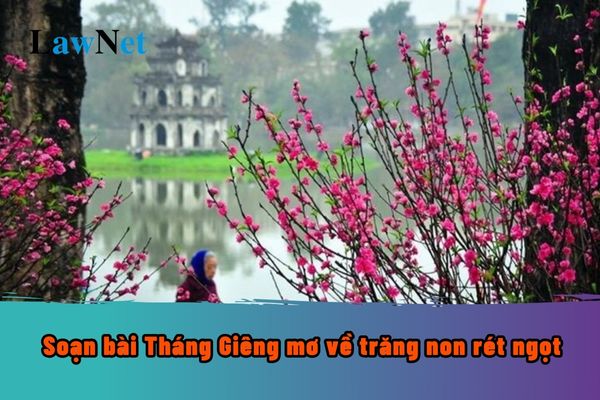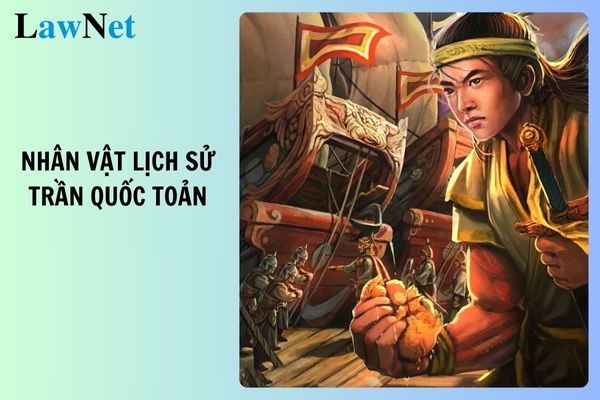Vietnam: What are the guidelines for preparing the Lesson 'Tháng Giêng mơ về trăng non rét ngọt'? What learning outcomes are required for the reading section in the 7th-grade Literature curriculum?
What are the guidelines for preparing the Lesson 'Tháng Giêng mơ về trăng non rét ngọt'?
The excerpt "Tháng Giêng mơ về trăng non rét ngọt" by Vu Bang is a magnificent, vivid portrayal of Hanoi's spring. Through the author's talented pen, readers are immersed in the space, time, and the delicate vibrations of spring.
7th-grade students can refer to the following guidelines for preparing the Lesson 'Tháng Giêng mơ về trăng non rét ngọt':
|
Guidelines for preparing the Lesson 'Tháng Giêng mơ về trăng non rét ngọt'
|
*Note: The above information is for reference only.

What are the guidelines for preparing the Lesson 'Tháng Giêng mơ về trăng non rét ngọt'? What learning outcomes are required for the reading section in the 7th-grade Literature curriculum? (Image from Internet)
What are the required literary competencies in the 7th-grade Literature curriculum in Vietnam?
Under Section 4 of the General Education Program for Literature issued with Circular 32/2018/TT-BGDDT, the required literary competencies in the 7th-grade Literature curriculum include:
Identify and differentiate types of literary texts: stories, poetry, plays, essays, and some representative genres for each type; analyze the effect of some formal artistic elements in each literary genre; understand the explicit and implicit content of literary texts. Present thoughts and impressions about a literary work and its impact on oneself; initially create some literary-like products.
>> In grades 6 and 7: identify the topic, understand the subject, and meaning of the text; recognize folk tales, short stories, lyrical and epic poetry; lyrical and narrative essays; identify the lyrical subject, lyrical character, and the expressive, cognitive values of the literary work; recognize and analyze the effects of some artistic forms and techniques associated with the characteristics of each literary genre (storyline, narrator's voice, character's dialogue, space and time, rhyme, rhythm, imagery, and rhetorical devices such as metaphor, metonymy, hyperbole, understatement).
What learning outcomes are required for the reading section in the 7th-grade Literature curriculum in Vietnam?
According to Section 5 of the General Education Program for Literature issued with Circular 32/2018/TT-BGDDT, the learning outcomes required for the reading section in the 7th-grade Literature curriculum in Vietnam include:
*Literary Texts
Reading Comprehension of Content
- Present the overall impression about the text; identify typical details, topics, stories, characters in the cohesion of the work.
- Recognize the theme, message the text wants to convey to readers.
- Identify the sentiments and emotions of the writer expressed through the language of the text.
- Summarize the text briefly.
Reading Comprehension of Form
- Identify some elements of proverbs: number of sentences, words, rhyme.
- Recognize some elements of fables and sci-fi stories such as topics, events, situations, plot, characters, space, time.
- Recognize character traits displayed through gestures, actions, dialogues; through the thoughts of other characters in the story; through the narrator's voice.
- Recognize and state the effects of changing the narrator's perspective (first-person narrator and third-person narrator) in a narrative story.
- Identify and comment on the uniqueness of the poem represented through words, images, rhyme, rhythm, rhetorical devices.
- Recognize the lyrical essence, personal voice, language of essays and prose.
Connection, Comparison, Linking
- Describe personal life experiences that help understand more about the characters, events in the literary work.
- Express agreement or disagreement with the attitude, sentiment, and way of resolving issues by the author; state the reasons.
Extensive readìng
- In one academic year, read at least 35 literary texts (including texts instructed to read online) that have a genre and length equivalent to the texts studied.
- Memorize some favorite poems or parts of poems in the curriculum.
*Argumentative Texts
Reading Comprehension of Content
- Identify opinions, reasons, and evidence in the text; point out the relationship between opinions, reasons, and evidence.
- Determine the purpose and main content of the text.
Reading Comprehension of Form
Identify the characteristics of argumentative texts about a life issue and analytical argumentation of a literary work; point out the relationship between the text's characteristics and its purpose.
Connection, Comparison, Linking
Describe life experiences that help understand the ideas or issues raised in the text.
Extensive readìng
In one academic year, read at least 9 argumentative texts (including texts instructed to read online) that have a length equivalent to the texts studied.
*Informational Texts
Reading Comprehension of Content
- Recognize the basic information of the text.
- Identify the role of details in conveying the basic information of the text.
Reading Comprehension of Form
- Recognize the characteristics of a text introducing rules or laws in a game or activity, and point out the relationship between the text's characteristics and its purpose.
- Recognize and understand the effects of footnotes and references in informational texts.
- Recognize how ideas and information are organized in a text (such as chronological order, cause-effect relationships, level of importance, or categorized objects).
Connection, Comparison, Linking
- Identify the expressive effects of a type of non-linguistic medium in a printed or electronic text.
- Describe life experiences that help understand the ideas or issues in the text.
Extensive readìng
In one academic year, read at least 18 informational texts (including texts instructed to read online) that have a style and length equivalent to the texts studied.










- What are the 02 2nd mid-semester question papers and answers for 7th-grade Chemistry in 2025? What are the manifestations of specific requirements in exploring the natural sciences under the Natural Sciences curriculum in Vietnam?
- What does metaphor mean? What are the examples of the rhetorical device of the metaphor? What is the grade at which students in Vietnam will learn the rhetorical question in the Literature curriculum?
- What is the other name of International Women's Day on March 8? How many teaching lessons are reduced for female upper secondary school teachers with young children in Vietnam?
- Vietnam: What are the lyrics and chords of the song "Quốc tế ca"? How many stages are there in the content of music education?
- What are the sample paragraphs showing thoughts on following trends among today's Vietnamese youth?
- Vietnam: What are the sample paragraphs about a favorite character in a read or heard story?
- What are the guidelines for presenting perspectives on patriotism? What is the nature of the content of Literature in Vietnam?
- What are the lyrics of the song "Bắc Bling"? What are the objectives of Music at the educational levels in Vietnam?
- What are the sample paragraphs expressing feelings about a poem? What is the current teaching norm for lower secondary school teachers in Vietnam?
- What are the sample paragraphs explaining why you like a story about love or gratitude for 6th-grade students in Vietnam?

